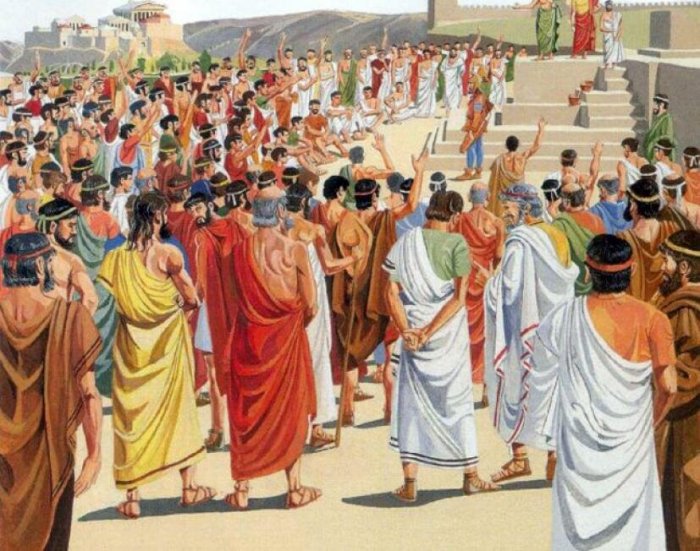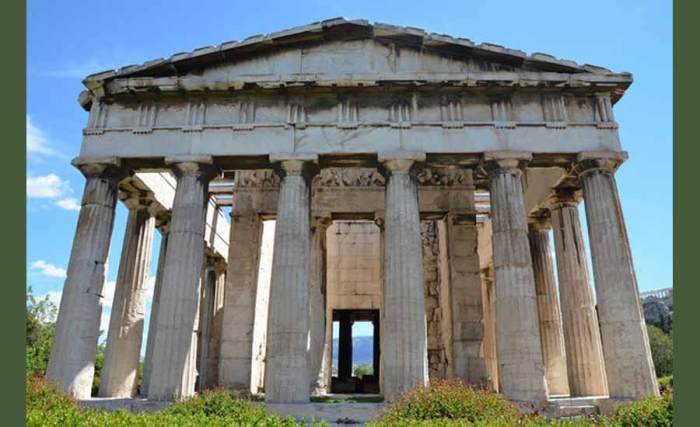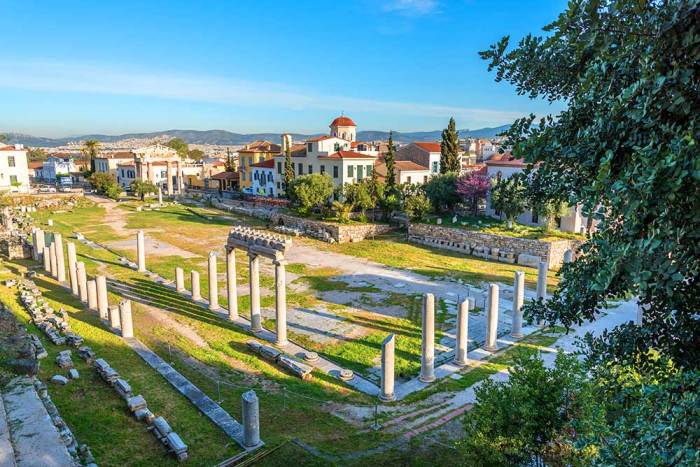The athenian agora and the experiment in democracy – Embarking on a journey through the Athenian Agora, we delve into the cradle of democracy, where ancient ideals took root and shaped the course of Western civilization.
The Agora, the bustling heart of Athens, served as the epicenter of civic life, commerce, and the groundbreaking experiment in self-governance that defined Athenian society.
The Athenian Agora: A Historical Overview: The Athenian Agora And The Experiment In Democracy

The Athenian Agora, located in the heart of ancient Athens, was the bustling civic and commercial center of the city. It was a vast, open-air space that served as the focal point for Athenian daily life, culture, and political activities.
The Agora was a rectangular space, surrounded by stoas (covered walkways) and temples. It was divided into several distinct areas, each with its own specific purpose. The north side of the Agora was dominated by the Stoa Poikile, a magnificent painted stoa that housed important political and philosophical gatherings.
The west side featured the Bouleuterion, where the Council of 500 met, and the Prytaneion, where the city’s magistrates dined.
The Agora was not only a physical space but also a symbolic one. It represented the heart of Athenian democracy, where citizens gathered to debate, make decisions, and participate in the governance of their city.
The Experiment in Democracy, The athenian agora and the experiment in democracy
Athenian democracy was a groundbreaking experiment in self-government. It was a system in which all male citizens over the age of 18 had the right to participate in the Assembly, the city’s supreme governing body. The Assembly met regularly to debate and vote on laws, declare war, and make other important decisions.
Athenian democracy was not a perfect system. It excluded women, slaves, and foreigners from participation. It was also susceptible to demagoguery and mob rule. However, for all its flaws, Athenian democracy was a remarkable achievement that laid the foundation for modern democratic systems.
The Agora and Democracy
The Agora was the physical and symbolic heart of Athenian democracy. It was the place where citizens gathered to debate, make decisions, and participate in the governance of their city. The Agora was a place where democracy was not just a theory but a lived reality.
The Agora was also a place where democratic ideals were developed and refined. The Stoa Poikile, for example, was the meeting place of the Stoic philosophers, who developed a philosophy that emphasized reason, virtue, and the importance of participating in public life.
The Agora’s Legacy
The Athenian Agora has had a profound impact on the development of democracy worldwide. The principles and practices of Athenian democracy have been adopted by countless other societies, and the Agora itself has become a symbol of democracy and self-government.
The Agora’s legacy is not just a matter of history. It is a living legacy that continues to inspire people around the world to strive for a more just and democratic society.
Popular Questions
What was the physical layout of the Athenian Agora?
The Agora was a large open space surrounded by stoas (covered walkways), temples, and other public buildings.
How did the Agora foster political debate and decision-making?
The Agora was the site of the Assembly, where all male citizens over the age of 18 could participate in debates and vote on laws.
What were some of the challenges faced by Athenian democracy?
Athenian democracy was limited to male citizens, and it could be difficult to reach a consensus on important issues.


